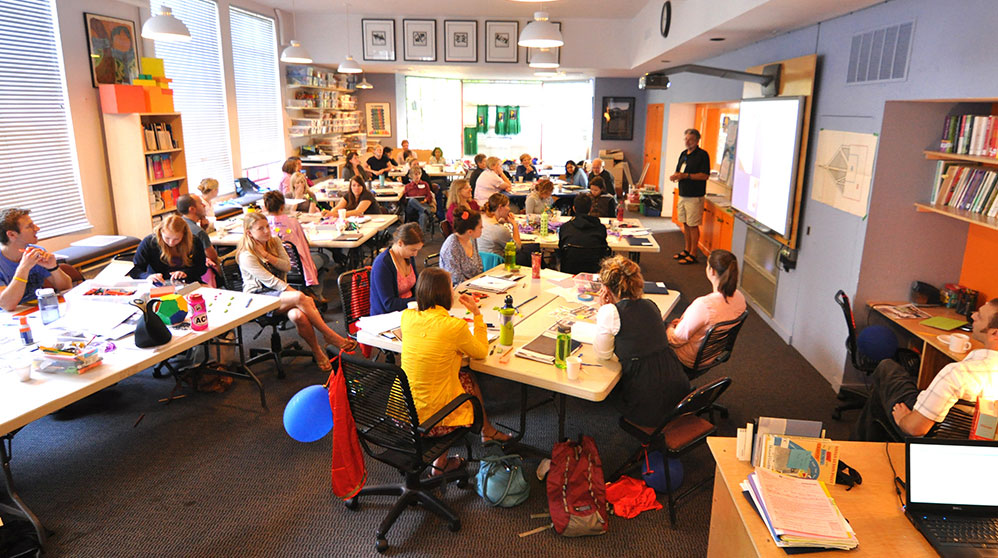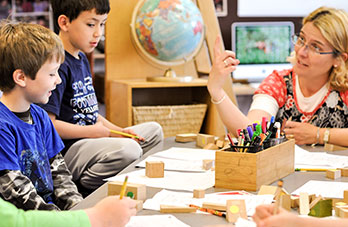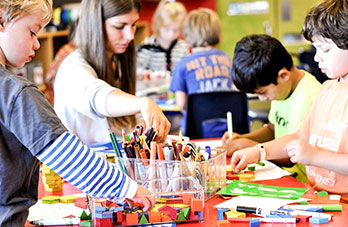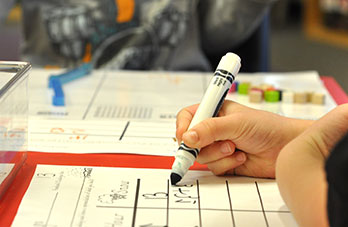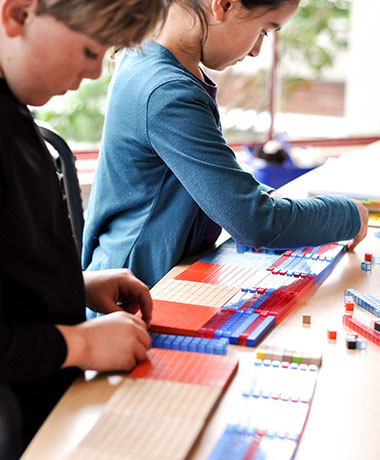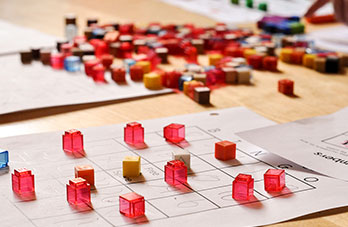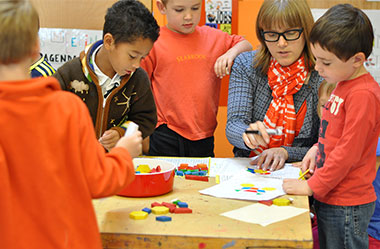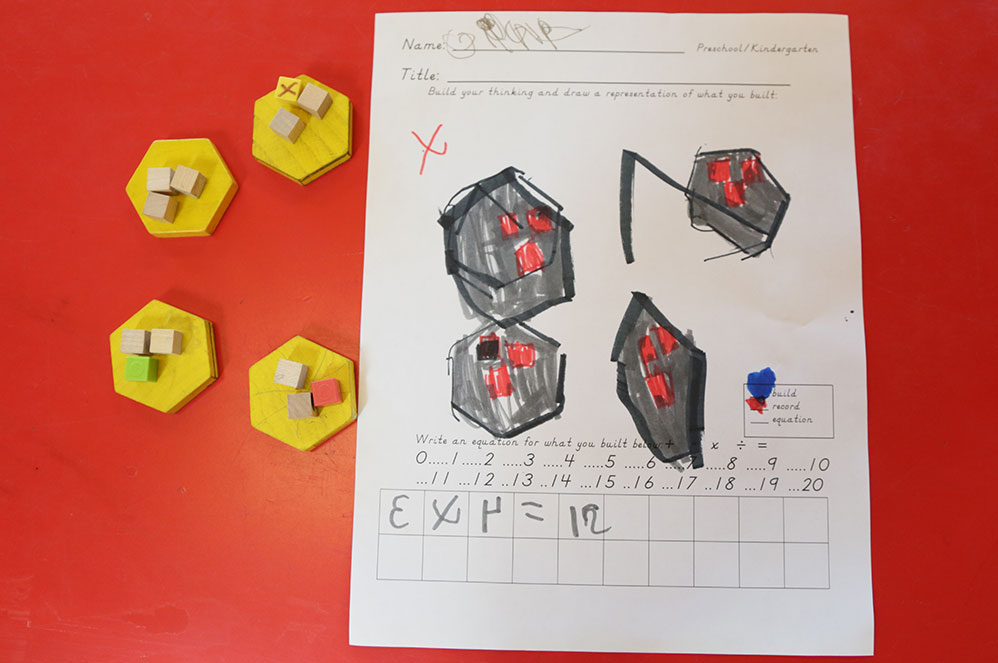Assessment
In the following three videos, you have a chance to see teachers from each grade level analyze and assess student work from the videos you just viewed.
When students Build, Draw, and Record their work, teachers gain insight to their understanding. We try to help students focus on having all three pieces of documentation align with one another as that demonstrates a deeper understanding of the concept. For example:
This work sample shows a student who is learning to understand the concept of multiplication.
She has built and drawn 4 groups of 3 cookies showing that she understands that multiplication is about grouping numbers.
When she writes her equation, she shows she is still learning what the symbols for multiplication mean, writing, “3 x 4 = 12” for 3 groups of 4 cookies instead of “4 x 3= 12” for the 4 groups of 3 cookies that she actually built. While correct in her product of 12, her equation does not match the other components of her work.
Down the road, we certainly want her to understand the commutative property but right now, we want her to understand that the multiplication symbol really means “groups of.” This inconsistency is not only an opportunity for discussion with the student, but serves as a wonderful anecdotal assessment piece for the teacher to build upon during future lessons with this child.

